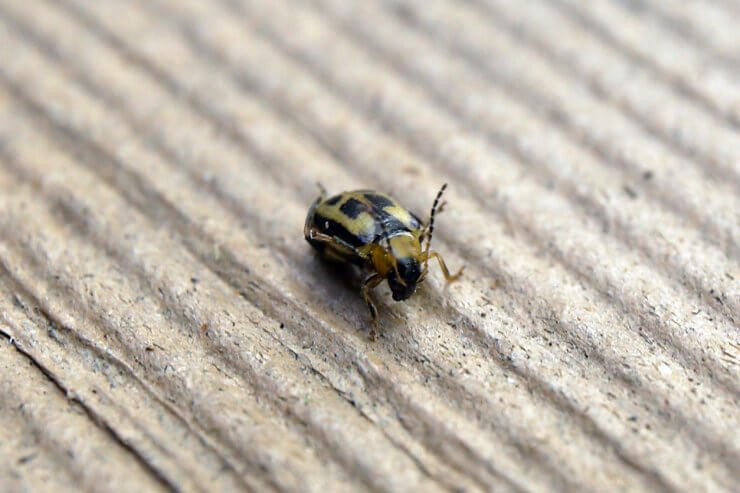
Bean leaf beetle
Pests on your green bean plants, left unchecked, can damage and destroy your green bean crop. Keeping a close watch on your plants during regular daily inspections will help you spot any pests before they can do irreparable harm. Healthy green bean plants can bounce back from pest damage if you catch the pests quickly.
Spot the symptoms of green bean pests
Check leaves, branches, and fruit for these symptoms that come from pests on the prowl!
On Green Bean Foliage
| Symptom | Pest |
| Holes chewed in leaves | Bean Leaf Beetle; Mexican Beetle |
| Winding trail scars on the leaves | Leaf miners |
On Green Bean Pods and Stems
| Symptom | Pest |
| Holes in pods | Corn earworm; European corn borer |
| Deformed pods | Stink bugs |
| Scars and holes in podss | Cowpea curculio |
| Holes in stems | Lesser cornstalk borer |
How to treat pests on green beans
Here are some proven ways to get rid of pests on your green bean plants. Choose the best treatment for the type of pests invading your plants.
- Pick off the pests. Use your garden gloves to remove the pests by hand. After removal, destroy pests by drowning them in a bucket of soapy water or crushing them with your foot. Handpicking isn’t efficient or practical for very small pests, but works well with larger pests such as the Mexican beetles.
- Remove holey or deformed pods. If you notice any deformed pods or pods with holes, remove them as soon as possible.
- Apply insecticidal soap. Insecticidal soap is organic. The potassium salts in insecticidal soap help remove an insect’s protective waxes, causing destruction of insect membranes and killing them. Mix the soap with water to create your solution and apply directly to insects on any plants. While insecticidal soap is less apt to affect other organisms, certain plants might be sensitive to the soap and can suffer leaf burn.
- Apply horticultural oils. Combine plant- or petroleum-based oils with water to produce horticultural sprays. Neem oil, for instance, is derived from seed extracts of the neem plant. Oil-based sprays block an insect’s air holes, interfere with an insect’s metabolism, disrupt insect feeding, and inhibit insect growth. Like insecticidal soaps, horticultural oils can cause plant injury if not properly diluted.
- Make your own pest spray. You can make your own pest spray with benign materials. Mix 1 tablespoon of baking soda, 1/2 teaspoon of a mild dish detergent, and 2 1/2 tablespoons of olive oil in a gallon of water to make a solution that will repel all kinds of bugs, as well as a fungicide for blight and mildew on the green bean plant leaves. Shake it well in your bottle before spraying and repeat every week for it to be continuously effective.
- Create a pest barrier. One way to deter those small but mighty pests intent on eating your plants is to create a physical barrier between the ground and the foliage. It’s easy enough to do: use a bottomless paper cup, a length of flexible cardboard, or a double layer of aluminum foil to create a cuff 4 inches high and place it around the seedlings to extend 2 inches below the soil line.
Do pests attack your green beans every year? How do you handle removing them—and even preventing them in the first place? Please tell us how you treat your green beans to avoid pests.


 Previous
Previous

